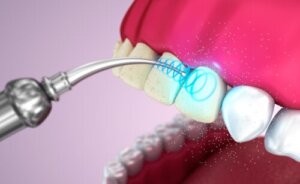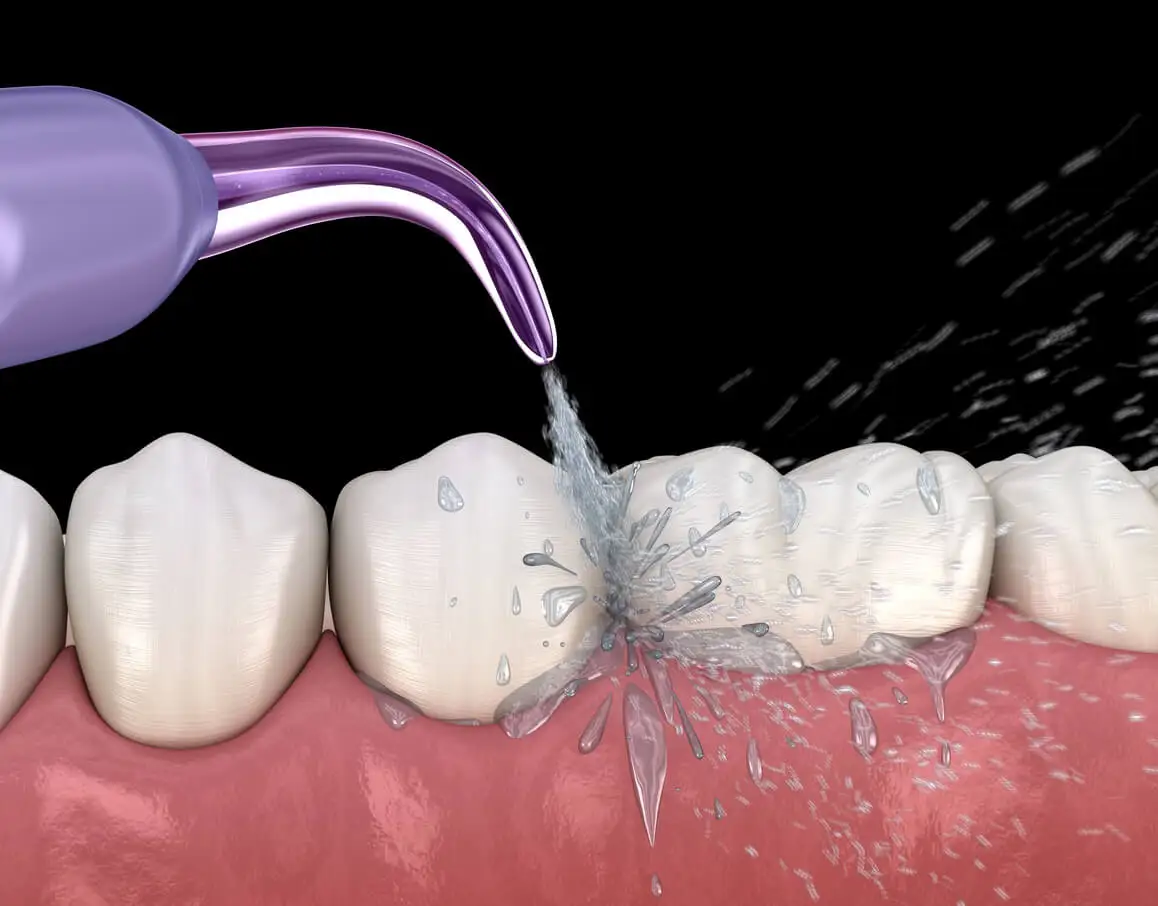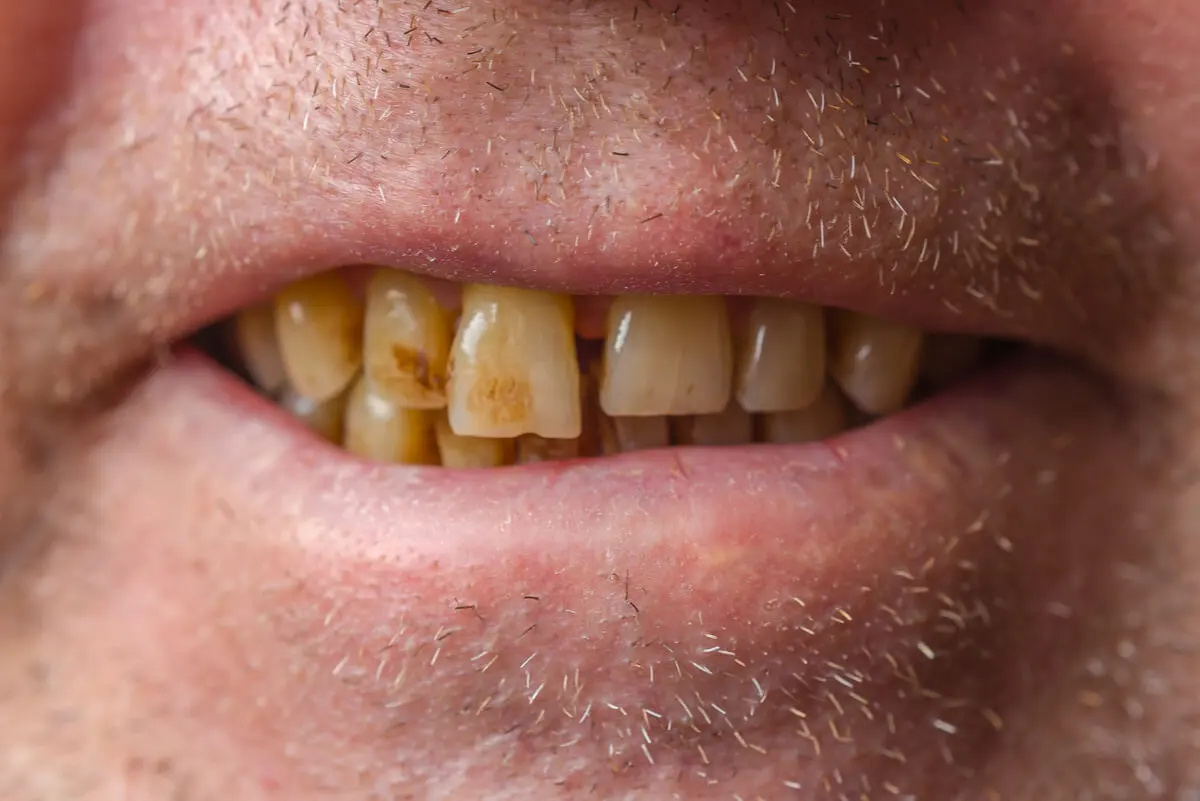Ultrasonic Tooth Cleaning: The Advantages and Disadvantages


Written and verified by the dentist Vanesa Evangelina Buffa
The accumulation of bacterial plaque and tartar in the mouth can cause various oral problems. Manual or ultrasonic tooth cleaning is an effective and necessary way to remove these deposits and maintain health.
Daily tooth brushing at home is vital to prevent bacteria and food debris from accumulating on oral surfaces. However, there are areas of the mouth where home hygiene isn’t enough. A dentist will be in charge of cleaning these difficult areas.
Regular visits to the dentist and professional prophylaxis at least once a year should be part of oral health care. In this article, we tell you about ultrasonic teeth cleaning. It’s one of the methods that a dentist can use to clean your mouth thoroughly.
Discover what this form of professional cleaning consists of and what its advantages and disadvantages are. Read on to find out more!
What is ultrasonic teeth cleaning?
One of the most common treatments performed in dental offices is the so-called professional prophylaxis or dental cleanings. This involves the removal of bacterial plaque and tartar deposits from all surfaces of the mouth, especially in those areas where daily brushing cannot reach.
It’s also able to remove surface stains from the teeth and help to reduce gum inflammation. This prevents common diseases such as cavities, gingivitis, and periodontitis.
Ideally, teeth should be professionally cleaned every six months or at least once a year. This allows you to keep your teeth and gums in good condition and achieve proper oral health.
When it comes to dental cleaning, the dentist can opt for a manual technique or use ultrasound. And in some cases, he or she may combine both methods, which usually gives better results.
In the case of the manual method, a specific instrument called a curette is used. This allows the dentist to precisely scrape the tooth surfaces and remove accumulated plaque and tartar deposits.
However, in this article, we’re going to tell you what ultrasonic teeth cleaning is all about. In this case, a special device that emits high-frequency waves is used to break up dental calculus without damaging the enamel.
Ultrasonic dental cleaning is able to remove large deposits of tartar quickly and effectively. Anyway, as we said, the combination with the manual technique that finishes discarding small calculus or located in areas of difficult access improves the results.
The ultrasonic scaler
To perform ultrasonic dental cleaning, the dentist must have a special device designed for this purpose. This device has a coupling that allows attachment to a curved metal tip, which is what’s used in the patient’s mouth.
The ultrasonic device used for this type of cleaning combines vibration with a jet of pressurized water flowing through the tip of the instrument. The vibratory waves are transmitted to the tartar accumulated on the teeth, breaking it up, dislodging it, and dissolving it.
In addition, the irrigation system allows the scaler to be cooled and prevents it from overheating. In this way, the heat generated by the appliance is not transmitted to the teeth, preventing damage. Meanwhile, the water jet washes and removes all remaining residues.

How and when is an ultrasonic tooth cleaning performed?
Now that you know what the instrument used for ultrasonic tooth cleaning looks like, we’ll tell you how it’s performed. The dentist takes the tip of the device and passes it over all the tooth surfaces, the interdental spaces, and the grooves formed between the gum and the tooth. With gentle, brush-like movements, the vibrations and water remove plaque, tartar, and stains.
The procedure is usually performed without anesthesia. However, some patients with gingivitis or tooth sensitivity may experience discomfort and need to have the area numbed. Although the process is painless, the patient will perceive the vibrations and may feel a tingling sensation in the dental elements.
At the end of the cleaning, the dentist passes an electric brush with a special paste that removes surface stains and remains of bacterial plaque that may have persisted. In this way, teeth and gums are free of tartar and look clean, smooth, and with their original color.
It’s best to get one or two professional cleanings a year. The dentist will best advise the patient according to his or her own needs.
Some habits, such as smoking, dental malpositions, dry mouth, or a predisposition to form a lot of tartar, can lead to the need for more frequent cleanings. Considering the dentist’s recommendations will help prevent problems caused by bacterial plaque buildup.
We think you may be interested in reading this, too: LED Teeth Whitening: Advantages, Disadvantages, and Care
The advantages of ultrasonic dental cleaning
Ultrasonic dental cleaning offers many advantages, both for the patient and for the professional who performs it. The duration of the process, the convenience of the technique, and the ease of performing it are some of the main benefits that are obtained when choosing this type of procedure.
Below, we’ll tell you the additional advantages of ultrasonic teeth cleaning in detail:
- It’s effective: It allows for the removal of bacterial plaque and tartar in an adequate way without damaging the dental tissue. In addition, it leaves smooth surfaces that prevent the retention of new residue.
- It’s fast: This technique can remove large amounts of tartar and clean larger tooth surfaces in a short time. Compared to manual cleaning, ultrasound allows prophylaxis to be performed much faster.
- It’s easier to perform than other methods: When using ultrasonic instruments, the dentist has to use less force to remove calculus than with a curette. Difficult areas can be easily reached, making it a comfortable technique.
- Patient comfort: The patient will only feel vibrations or slight discomfort during the treatment, unlike the manual technique, which can become uncomfortable when feeling the force of the dentist pulling on the teeth to remove tartar.
- The intensity can be adjusted: The device allows you to regulate the water flow, the power range, and the frequency of the tip vibrations. In this way, the treatment can be adapted to the sensitivity of the patient.
- It removes stains: Superficial pigments on the teeth can be removed with this procedure. Thus, stains from tea, wine, coffee, or tobacco can disappear after an ultrasonic tooth cleaning.
- Its special tips can be used on porcelain restorations or titanium implants.

Like this article? You may also like to read: 3 DIY Treatments to Remove Tartar from Your Teeth
The disadvantages of ultrasonic teeth cleaning
Ultrasonic teeth cleaning has many benefits. However, you should know that this procedure can’t be used in all cases. And also, in some situations, it may have some disadvantages.
Ultrasonic tooth cleaning isn’t recommended for patients with excessive tooth sensitivity. It’s also not possible to use this procedure in people with pacemakers since the vibrations could affect the correct functioning of this cardiac device.
One of the disadvantages of ultrasonic teeth cleaning is the vibration caused by the device. Although these waves are capable of removing tartar from the teeth, they can become annoying for the dentist who repeats this type of procedure repeatedly. In the long term, hearing damage could occur for these healthcare professionals.
In addition, the vibrations can prevent the dentist from accurately checking whether all plaque and calculus residues have been removed. Perception of detail is much more accurate using hand instruments.
Tooth decay from heating during scaling is another health risk associated with the use of ultrasound during dental cleanings. Cellular rupture due to vibrations and possible platelet damage due to cavitation are also risks.
The release of aerosols containing dangerous bacteria during the process is also a disadvantage to consider. The water droplets that are dispersed during ultrasonic tooth cleaning can make the health personnel in charge sick.
This aspect has become particularly relevant in times of COVID-19. For this reason, during the pandemic, the American Dental Association (ADA) recommended manual scaling rather than ultrasonic scaling to preserve the health of dentists.
Maintaining oral health
When bacteria in the mouth are not removed in a timely manner with proper oral hygiene, they build up and accumulate on oral surfaces. Over time, they can calcify and give rise to what is known as dental tartar.
Bacterial plaque and calculus irritate the gums and cause inflammation, giving rise to gingivitis and then periodontitis or pyorrhea. They also favor the development of cavities, bad breath, and infections.
You should know that tartar cannot be removed simply by brushing your teeth. The dentist must remove it through dental cleanings.
To preserve your health, taking care of your mouth at home is as important as visiting the dentist. Frequent tooth brushing, the use of fluoride toothpaste, dental floss, and mouth rinses help remove bacteria and food debris and prevent it from accumulating.
In addition, dental cleanings performed by the dentist, both manual and ultrasonic, remove tartar and plaque that the patient can’t control. This prevents the most common oral diseases and maintains oral health.
The professional will be a good idea; in other cases, the manual technique will be more appropriate. And in most cases, the combination of both procedures will give the best results.
Maintaining oral hygiene habits at home and visiting the dentist every six months is the best strategy for taking care of your mouth. Ultrasonic teeth cleaning can achieve clean and stain-free teeth. However, consistency and patient responsibility with their oral health is key for the results to be sustained.
“]
All cited sources were thoroughly reviewed by our team to ensure their quality, reliability, currency, and validity. The bibliography of this article was considered reliable and of academic or scientific accuracy.
- Caballero, A., Ricaurte, M., & Conrado, C. (2011). Cálculo dental: una revisión de literatura y presentación de una condición inusual. Acta odontológica venezolana, 49(3).
- Quinche Maldonado, F. L. (2008). Análisis comparativo entre raspado y alisado radicular utilizando piezoeléctrico y curetas Gracey en dientes indicados para la extracción vistos al microscopio electrónico de barrido (Bachelor’s thesis, Quito: USFQ, 2008).
- Trenter, S. C., & Walmsley, A. D. (2003). Ultrasonic dental scaler: associated hazards. Journal of clinical periodontology, 30(2), 95-101.
- Singh, A., Manjunath, R. S., Singla, D., Bhattacharya, H. S., Sarkar, A., & Chandra, N. (2016). Aerosol, a health hazard during ultrasonic scaling: A clinico-microbiological study. Indian Journal of Dental Research, 27(2), 160.
- Veena, H. R., Mahantesha, S., Joseph, P. A., Patil, S. R., & Patil, S. H. (2015). Dissemination of aerosol and splatter during ultrasonic scaling: a pilot study. Journal of infection and public health, 8(3), 260-265.
- Roedig, J. J., Shah, J., Elayi, C. S., & Miller, C. S. (2010). Interference of cardiac pacemaker and implantable cardioverter-defibrillator activity during electronic dental device use. The Journal of the American Dental Association, 141(5), 521-526.
- Ou, Q., Placucci, R. G., Danielson, J., Anderson, G., Olin, P., Jardine, P., … & Pui, D. Y. (2021). Characterization and mitigation of aerosols and spatters from ultrasonic scalers. The Journal of the American Dental Association, 152(12), 981-990.
- Pierre‐Bez, A. C., Agostini‐Walesch, G. M., Bradford Smith, P., Hong, Q., Hancock, D. S., Davis, M., … & Mitchell, J. C. (2021). Ultrasonic scaling in COVID‐era dentistry: A quantitative assessment of aerosol spread during simulated and clinical ultrasonic scaling procedures. International journal of dental hygiene, 19(4), 474-480.
- Esmaeilnejadganji, N. S. (2020). Periodontal Tissue Response to Scaling and Root Planing with or without Ultrasonic Instrumentation in Periodontitis Patients (Doctoral dissertation, Tufts University School of Dental Medicine).
This text is provided for informational purposes only and does not replace consultation with a professional. If in doubt, consult your specialist.








